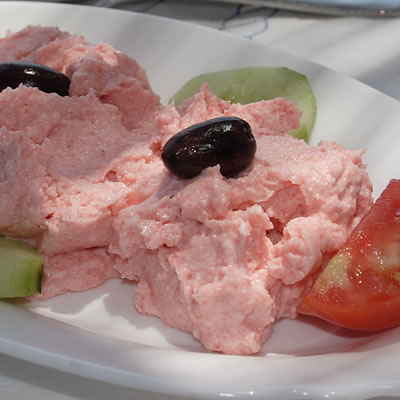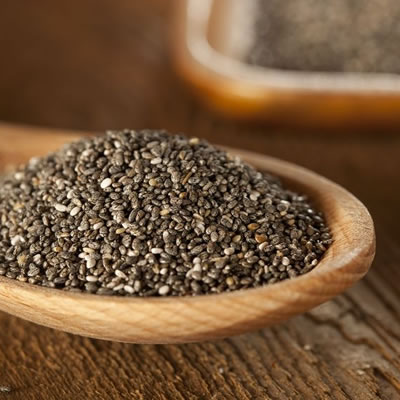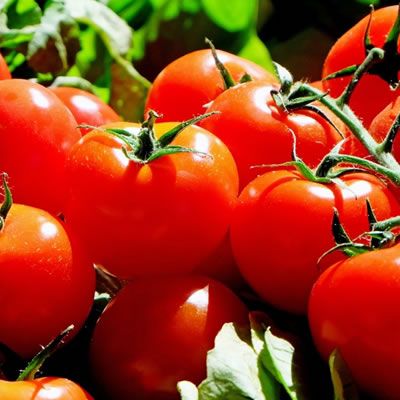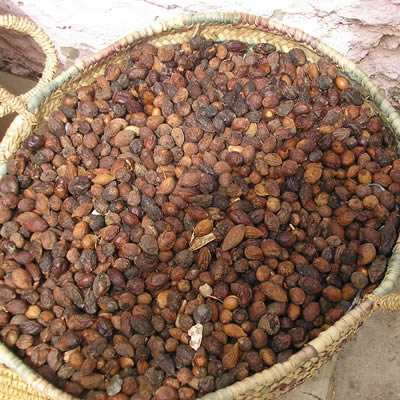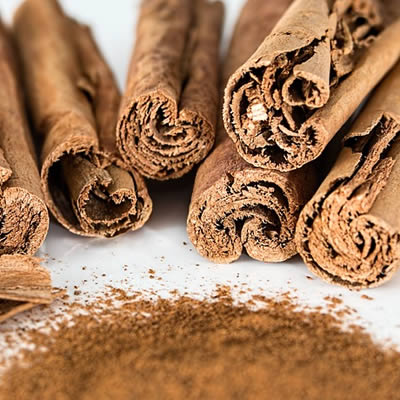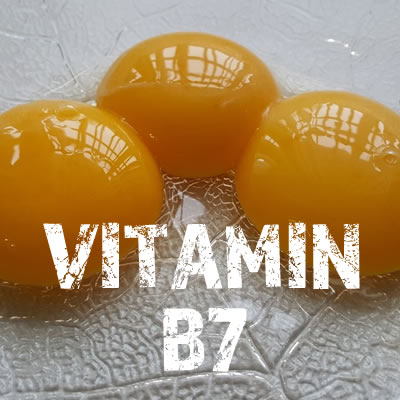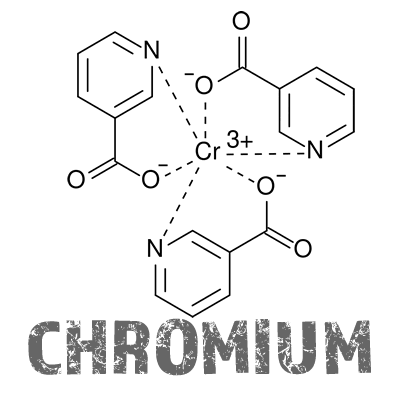Heart Health
You don’t really “catch” Heart disease like a typical illness and there is no magic pill that will cure it. It usually develops via a bad lifestyle combined with a bad diet. There is an element of luck involved to dodge a heart attack, but we can load the dice in our favour. A few decades ago, having a heart attack was likely to be fatal. Nowadays, primary care and emergency response are so good that heart attacks are mostly survivable. But life after a heart attack is pretty tough as you will be vulnerable to more and will most likely be taking a cocktail of drugs.
- Medical professionals, who are fed biased studies from the pharmaceutical companies, have never tackled the true causes of heart disease. They have treated what is essentially a dietary disease with pharmaceuticals. They blamed salt, fatty foods and cholesterol whilst ignoring sugars and inflammatory processed foods.
- Politicians, pharmaceutical companies, medical establishment, food companies, researchers, regulators and heart charities are all intertwined. Ideas about lifestyle, fasting and nutrition are rarely mentioned. Selling drugs and treating the symptoms are the main priorities.
- People who are deemed to be at risk of coronary diseases are given drugs and told that they have a lifelong, irreversible condition. But the truth is that heart problems can be prevented and reversed by eating the right foods and taking some essential supplements. These prevent and treat disease by providing the body with optimal amounts of substances, which are natural to the body such as vitamins and minerals, avoiding environmental toxins and making some lifestyle changes.
Cholesterol
Cholesterol is vital to human health because every cell membrane in the body, including those in the brain, nerves, muscles, skin, liver, intestines and heart is made from cholesterol. All of the steroid hormones in your body, including the sex and adrenal hormones, are synthesised from cholesterol. Vitamin D and bile acid are also made from cholesterol. In fact, cholesterol production is so important that your liver and intestines make about 80% of the cholesterol you need to stay healthy. The synthesis and use of cholesterol is tightly regulated in order to prevent over-accumulation and abnormal deposition within the body.
Normal healthy adults make cholesterol at a rate of approximately 1-2g/day and consume approximately 0.3g/day. Your body maintains a constant level of cholesterol in the blood (150–200 mg/dL) and this is maintained mainly by controlling the level production. So, the level of cholesterol synthesis is regulated by the dietary intake of cholesterol. The greatest proportion of cholesterol is used in bile acid synthesis.
If you consume too much cholesterol your body makes less. If you don’t eat foods rich in cholesterol your body makes more.
Synthesis of cholesterol begins with the transport of acetyl-CoA from within the cell mitochondria to the cytosol (the aqueous component of the cytoplasm of a cell) where a complex series of reactions take place to form cholesterol. Cholesterol is essential for the production of the steroidal sex hormones estrogen and progesterone in women and testosterone in men, and for the production of the adrenal hormones cortisol and aldosterone. Cortisol is involved in regulating blood sugar levels and in immune and inflammatory responses, and adolsterone is important for retaining salt and water in the body.
Cholesterol is involved in the production of bile salts, which are produced by the liver and stored in the gallbladder. Bile salts help in the digestion and absorption of fat and the fat soluble vitamins A, D, E, and K.
Pharmaceutical companies have lobbied hard to alter the definition of high cholesterol in order to increase the number of people who are eligible to take cholesterol medications such as statins.
Good and bad cholesterol?
Good and bad cholesterol is a terrible way to describe cholesterol. Low density lipo-proteins (LDL) are commonly called ‘bad’ cholesterol and high density lipo-proteins (HDL) are called ‘good’ cholesterol. HDL and LDL are not even cholesterol, they are lipo-proteins that move cholesterol around the body – essentially just carriers. This is how the body moves cholesterol from the liver to the location of an arterial tear, and back to the liver.
HDL the so called ‘good’ cholesterol is the lipo-protein that transports cholesterol from the bloodstream back to the liver. LDL transports cholesterol from the liver to the bloodstream so that cholesterol can perform all its vital functions. Calling LDL ‘bad’ is very misleading. LDL particles can oxidise in the bloodstream and irritate blood vessels. But many things such as poly-unsaturated fats can also oxidise to cause issues. Fat oxidation is something that our bodies can deal with via antioxidants such as Vitamins C and E. These prevent oxidative free radical damage. Consuming vitamin C and vitamin E rich foods, or taking C & E supplements would seem to be the perfectly safe alternative to the expensive drugs.
There are also several types of LDL. The main ones are LDL Pattern A which covers larger LDL particles and LDL pattern B which covers small dense particles that are more problematic. Interestingly, the smaller pattern B particles tend to predominate when blood lipids are high and HDL cholesterol is low – this is very common in diets that are low fat & high carbohydrate
The statin problem
Cholesterol has been demonised thanks to a massive effort from the pharmaceutical industry. They have pushed statins to the extent that doctors are prescribing these drugs as prevention in healthy patients. Statin drugs were originally prescribed for the prevention of a second heart attack or stroke, or those with a clear risk of heart disease. But now doctors hand them out for prevention, even if patients are healthy. Many of the key studies used to justify this hike in statin use were flawed and biased.The data was deceptively reported to hype the drugs’ benefits while minimizing their risks (“In the Jupiter statin trial, the public and healthcare workers were informed of a 54% reduction in heart attacks, when the actual effect in reduction of coronary events was less than 1%” – Mercola). 11.8 million people in England (37% of adults aged 30 to 84) exceed the threshold set by NICE for prescribing statins. 9.8 million of these are healthy, with no history of cardiovascular events and are eligible for treatment simply because they exceed the risk threshold set by NICE (a 10% risk of experiencing such a cardiovascular event in the next 10 years). The USA figures are even more staggering, with 1 in 4 people over 45 on statins.
In March 2022, the Journal of The American Medical Association (JAMA) evaluated the association between LDL cholesterol reduction and the effects of statin treatment. In this meta-analysis of 21 randomized clinical trials that examined the efficacy of statins in reducing total mortality and cardiovascular outcomes:
- There was a reduction in the absolute risk of only 0.8% for all-cause mortality, 1.3% for myocardial infarction, and 0.4% for stroke in those randomised trials to treatment with statins compared with control.
- The study concluded that the absolute benefits of statins are MODEST and that patients should be told this.
If you consider the importance of cholesterol as a building block in the body, and the serious side effects of statins, it would be hard to justify their use. There are way more effective, and free, ways to drastically reduce the risk of heart disease:
- A nutrient-rich eating plan such as the Mediterranean/Japanese style diet.
- Stopping smoking
- More exercise
- Less stress
- Supplementation with essential micronutrients
Cholesterol levels are not a good indicator of heart attack risk
Saturated fat was wrongly accused of causing heart disease, and by inference, cholesterol was blamed. Everyone had their blood cholesterol tested and statins were prescribed if the results were high. Tests then moved on to focus on “good and bad cholesterol”. The body uses cholesterol to repair and build arteries that suffer from more underlying issues such as inflammation.
The war against fatty foods
There was a famous (yet flawed) 1953 analysis of heart disease called the 7 countries study. The study was done by Ancel Keys who initially looked 22 countries, but only reported on seven: Finland, Greece, Italy, Japan, The Netherlands, United States, and Yugoslavia. Simply looking only at the 7 countries, anyone with would of concluded that there was a clear correlation between the amount of fat you eat and the incidence of heart failure. So began the war on fat, which still rages even to this day. In the coming decades, the following trends occurred:
- Red meat consumption fell drastically.
- Lard was removed from most diets.
- Full fat creams and dairy were switched to lower fat versions.
- Processed oil use (particularly corn) rocketed.
- Clean meats such a chicken became number one.
- Low fat foods were promoted.
- High fructose corn syrup (HFCS) was used widely.
- Sugar consumption rocketed.
- The use of convenience foods and snacks soared.
- Most food companies were bought and international conglomerates were born.
The Seven Countries Study
The 7 countries study omitted the data from a further 15 countries. In 1957 there was a second study that was highly critical of Key’s conclusions. The data from 22 countries showed that there was a huge variation in the rates of mortality compared to fat intake. The graph on the right clearly shows that many other factors come into play and that there are many countries with high-fat intakes that have low incidences of heart mortality rates. But the damage was already done and the worldwide food industry was well underway with the low-fat mantra.
Switzerland is an interesting example. The Swiss eat loads of fat, cheese and dairy, meat and potatoes. They also love to drink and smoke (nearly 30% of the nation smoke). Yet the Swiss have the 2nd highest life expectancy in the world (Japan is number 1). The Swiss have very strict milk, cheese and meat quality laws. They also love fermented foods which are amazing for gut health. They tend not to snack, relying instead on big wholesome meals. Animal welfare and soil quality is probably the best in the world. As a result, the Swiss people eat quality nutrient-dense foods (rich in key vitamins such as K2).
People presumed that if you consumed saturated fat that it went straight to your coronary arteries and caused them to clog and get narrower (a bit like pouring oil into your sink and it solidifies in the pipe). But heart disease doesn’t work like this as it’s a chronic inflammatory condition. So people started to fear fats and meats and started to shift their macronutrient intake towards a low-fat high-carb diet. To this day, most people believe that fat clogs your arteries
The prospective urban rural epidemiological study (PURE) was the largest ever epidemiological study, covering 1000 communities, across 21 countries and 6 continents, with multiple ethnic groups and cultural diversity, it saw more than 218 000 participants divided into five groups according to the quality of their diet based on food items that were individually associated with lower risk of death. They found no correlation with fat intake and cardiovascular disease, heart attacks or death from heart disease. The recent UK biobank study which involves over 195,000 people found no evidence of dietary saturated fat intake linking with heart
- Substituting saturated fat for polyunsaturated fat containing seed oils (like canola oil, corn oil and sunflower oil) actually increase risk for cardiovascular disease
- Substituting fat for carbohydrates, starches and sugars increased the risk of cardiovascular disease.
- PURE suggests that rather than minimising dairy, a moderate amount—three servings a day—can protect the heart rather than damage it.
- Natural fats seem to be protective …. and for most essential nutrients there may be a U-shaped curve—too high may be bad, too low may be bad, so there is always a sweet spot.
The conclusion was that the recommendation to limit saturated fat for coronary heart disease prevention was outdated. The scientific evidence shows that the advice to remove saturated fat from diets has increased cardiovascular disease.
Better indicators of heart health:-
If your resting heart rate is consistently above 100 beats a minute (tachycardia) then this could be a signal of heart disease. If your resting heart rate is below 60 beats a minute (bradycardia) and you’re not an athlete, this could signal problems too. Especially if you have other signs or symptoms, such as fainting, dizziness or shortness of breath. It’s a great idea to wear a smart watch which has the ability to monitor heart rate.

Heart rate recovery
Write down your resting heart rate. Do 1 minute of hard exercise and take your peak heart rate (A). Wait 1 minute and measure your recovery heart rate (B).
If A-B = 12 or less: you are at risk.
If A-B = 13-20: moderate risk.
If A-B = 20-40: you are in good shape.

Belly to height ratio
It’s easier to do this in centimetres. Measure your waist at the top of your hips (don’t suck it in!) Divide this by your height. This ratio has been found to be a better indicator of heart disease than the standard BMI measure. Ideally you should be at 0.5 or below. Read more.
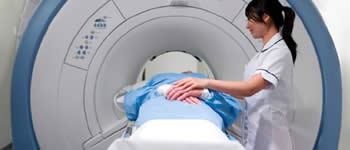
The CAC test score
A coronary artery calcium score is a measurement of the amount of calcium in the walls of the arteries that supply the heart muscle. It’s measured by taking a special CT scan of your heart. Read more.
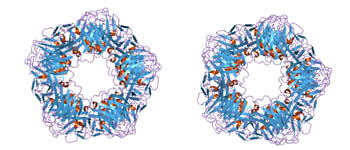
C-reactive protein (CRP)
Inflammation plays a key role in the development of atherosclerosis and coronary heart disease. The CRP test is a blood test marker for inflammation in the body. Levels of CRP rise in response to inflammation. Also ask for hs-CRP.

Electrocardiogram – EKG
An electrocardiogram (EKG) measures your heart’s electrical activity. This noninvasive test can measure many aspects, from how fast the heart beats to how well its chambers conduct electrical energy.

Blood sugar and insulin
Insulin resistance represents a major underlying factor driving heart disease. Sugar is the villain, not fat. Get a fasting insulin test and blood sugar test. Remove as many processed carbs and sugars from your diet as you can.
Vitamin D test
It is not a true vitamin because it can be synthesised endogenously through ultraviolet exposure of the skin. It is a steroid hormone that comes in 3 forms. Vitamin D is a fat-soluble vitamin responsible for increasing intestinal absorption of calcium, magnesium, phosphate and multiple other biological processes. Vitamin D is important for the absorption of calcium from the stomach and for the functioning of calcium in the body. If you are deficient in vitamin D you increase the risk of heart disease. Vitamin D is made from cholesterol. Vitamin D3, also known as cholecalciferol, is made in our skin when sunlight is absorbed by a the molecule 7-dehydrocholesterol. So when the body is making vitamin D from sunlight, it consumes cholesterol. There is certainly evidence of higher rates of heart attacks in the winter months when vitamin D production is at its lowest. Similarly, there is a pattern of lower rates of heart disease the closer you get to the equator. Ask your doctor to check your vitamin D level. You’ll take a simple blood test called 25- hydroxyvitamin D. 30 and 60 ng/ml is normal.
Lipoprotein (a) testing – Lp(a)
One of vitamin C’s roles in the body is to repair the micro-fractures and lesions that occur naturally on the walls of arteries. Vitamin C is also used to make collagen. Humans differ from animals in that we evolved not to produce our own vitamin C. But we also evolved a safety mechanism, when vitamin C is low our livers produce a “sticky” repair agent called lipoprotein (a) that could be sent out to temporarily plug the arterial walls. Extreme vitamin C deficiency is called scurvy, where the arterial walls disintegrate.
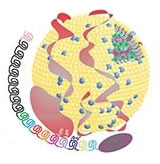
The absence of sufficient vitamin C impairs the formation of stable collagen in the arteries. Arterial plaquing occurs when the body tries to heal over arterial lesions when vitamin C is low. Cholesterol, lipids and calcium build up in the arterial wall which can ultimately lead to heart attacks and stokes. Animals can make their own vitamin C and so regulate collagen production and repair the heart, but interestingly only humans can produce lipoprotein (a). Animals don’t tend to have heart attacks, but we do.
High levels of Lp(a) means that our body needs it to fix existing arterial problems. The cause is inflammation, bad fat oxidation and a lack of natural anti-oxidants such as vitamin C. Taking measures to reduce Lp(a) does not lower your risk – it’s an indicator of risk – meaning that you have an underlying problem.
Collagen
Collagen acts as a kind of intracellular glue that gives support, shape and bulk to blood vessels, bones, and organs such as the heart, kidneys and liver. Collagen is also required for the repair of blood vessels. Our body is continually making collagen to maintain and repair tissues lost. Without vitamin C, collagen formation is disrupted. Scurvy is really a process that disrupts the body’s ability to manufacture collagen and connective tissues. The blood vessels crumble and begin to fall apart, leading to bruising and bleeding as vessels rupture (hemorrhage) throughout the body. Scurvy is now almost eradicated, but vitamin C deficiency can have a negative effect on collagen levels and the heart. Without collagen the blood vessels becomes weak, which in turn need lipoprotein (a) cholesterol to penetrate the tissue to “patch” the blood vessels so that they do not rupture. So we must ensure that out vitamin C levels are always high. We must also ensure that we have a generous supply of dietary collagen. Unfortunately, the modern diet of leaner meats (without bones, skin and connective tissues) has reduced our dietary intake of collagen.
Eye Scans
The only visible arteries in your body are in your eye. Cardio Retinometry is a method of studying heart disease through the analysis of the eyes. It is a preventative measure against the threat of heart disease, high blood pressure and strokes. Using standard optical equipment for opticians, such as a fundus camera, patients can discover the early symptoms via the study of small arteries in the rear of the eye.
One of the leading proponents of retinal arterial analysis is Dr Sydney Bush DOpt., PhD. He is a great supporter of Linus Pauling’s view that vitamin C can reverse arterial plaquing and thinning.
Orthomolecular medicine approach
Two-time Nobel Prize winner, and molecular biologist, Linus Pauling, coined the term “Orthomolecular” in 1968. He was a lifelong advocate of vitamin C. A large, decade-long study found that men who took 800 mg of vitamin C per day had less heart disease and lived up to six years longer than those following the conventional guideline of 60 mg/day. Linus Pauling recommended large doses of vitamin C which is needed to make collagen in your body. The RDA for vitamin C is 75-90mg daily, whilst this is enough to prevent scurvy, it isn’t enough to treat and reverse coronary plaquing. Pauling’s research concluded that a daily intake 3,000 mg divided dose is required for adequate collagen synthesis and protection from heart disease. Or 6,000 mg for those with diagnosed heart disease.
Pauling actually recommend taking large doses of vitamin C and the amino acids, lycine and proline. Collagen is synthesised, via procollagen, from Lycine and proline in the presence of vitamin C.
- Hydroxyproline serves to stabilize the collagen triple helix; its absence results in structurally unstable collagen.
- Hydroxylysine is necessary for formation of the intermolecular crosslinks in collagen
- Pauling reasoned that by increasing concentrations of lysine and proline in the blood, Lp(a) molecules would bind with the free lysine, rather than with the lysine strands exposed by the cracks in blood vessels.
- The “Pauling Therapy” promotes the supplementation of vitamin C, L-proline, L-lysine, CoQ10, L-carnitine, vitamin B3 (niacin) and vitamin E. This certainly seems way better than taking statins!
Orthomolecular medicine focuses on the use of micro-nutrients and the individual nutritional needs of a person. It uses both diet and supplements to restore and maintain the correct nutritional balance. “Ortho” means “correct.” Orthomolecular balances of vitamins, minerals and amino acids in the body.

How can you prevent heart attacks?
- Lose weight: If you are overweight and holding the fat internally, specifically as visceral fat, you need to drop the weight as quickly as possible. Being overweight puts a strain on your heart and makes it hard for you to be more active. Staying active reduces the chance of future heart disease and stroke. Intermittent fasting and longer fasting are healthy ways to lose weight with quick results. Conventional diets don’t work.
- Fix your inflammation. Stop eating inflammatory foods and start eating foods that are known to be non-inflammatory. The C-reactive protein (CRP) test is a blood test marker for inflammation in the body. C-reactive protein is ring-shaped protein found in blood plasma, whose levels rise in response to inflammation.
- Check your thyroid and take iodine: When the thyroid puts out too much hormone, it’s called an overactive thyroid or hyperthyroidism. This causes the heart to beat faster, which can lead to palpitations, or an irregular heartbeat. An underactive thyroid causes changes in the blood fats and blood vessel function that may lead to an increased risk of narrowing of the arteries.
- Increase dietary fibre. Fibre interferes with bile acid in the intestines and causes it to be eliminated as waste. Bile acid is made from cholesterol. To make up for this loss of bile, LDL cholesterol is pulled from the blood to make new bile acid. This causes cholesterol levels in the blood to go down.
- Electrolytes: Your heart works using electric signals. So you must have the correct balance of electrolytes in your body. Contrary to popular belief, salt is good for you. Heart rate variability increase rise if you have low salt. Heart rate will rise if you have low salt. Studies have clearly shown that having the correct balance of potassium to sodium is far more important than lowering salt alone. Eat plenty of potassium! Studies have shown that increasing potassium intake can reduce the risk of cardiovascular diseases, such as high blood pressure, heart disease and stroke. Potassium prevents vascular calcification
- Magnesium is necessary for maintaining a steady heartbeat and normal blood pressure. Your heart has the highest magnesium requirement of any organ. With insufficient amounts of magnesium, your heart cannot function properly. It’s very important to have a good balance between calcium and magnesium, most people are deficient in magnesium. Statin drugs lower LDL-C levels more sharply than do magnesium supplements, but magnesium more reliably acts to improve all aspects of dyslipidemia including raising HDL-C and lowering triglycerides, and has the same effects as statins without their adverse effects. According to Mercola, among people who did not have any signs of cardiovascular disease, and compared to those with the lowest serum levels, those who had the highest serum level of magnesium had a:
- 48 percent lower risk of high blood pressure
- 69 percent lower risk of type 2 diabetes
- 42 percent lower risk of an elevated CAC score
- Selenium is critical for heart health; concentrations are inversely associated with coronary heart disease risk in studies. Selenium is an essential trace mineral involved in protection against oxidative damage via selenium-dependent glutathione peroxidases and other selenoproteins. The best food source for selenium is Brazil nuts (just 2 a day) and many multi-vitamins have selenium (Centrum has 55mg, 100% of the RDA).
- Vitamin C: Eat plenty of foods rich in vitamin C and also take a supplement to be on the safe side. Vitamin C can safely and effectively clear your arteries of dangerous plaque that leads to heart attack and stroke.
- Vitamin D: Arterial plaquing it higher in the winter than the summer, because of vitamin D production in sunlight.
- Vitamin E: Vitamin E’s main role is to protect polyunsaturated fatty acids (PUFA’s) from a damaging oxidation called as lipid peroxidation; this is a form of oxidative damage that can damage arteries. PUFA’s have been in our diet for years and they cause damaging free radicals.
- The Linus Pauling recommendation: L-lysine, L-proline and glycine: When collagen is sythesised a three-dimensional stranded structure is assembled, with the amino acids glycine and proline as its principal components. This is not yet collagen but its precursor, procollagen. Procollagen is then modified by the addition of hydroxyl groups to the amino acids proline and lysine. Linus Pauling recommended taking the following preventative staged doses daily:
- Vitamin C, 3g
- L-Lysine, 2g
- L-proline, 0.5g
- Glycine: 5g before your first meal and 3g before bed
- Acetyl L-carnitine: 0.5-1g
- CoQ10: 50-200mg
- Vitamin B3: Under 35mg per day as more can cause flushing of the skin
- Vitamin E
- Omega 3: Most Western diets are deficient in omega-3 fats. Omega-3’s fats are anti-inflammatory, help regulate heartbeats, ensure healthy blood clotting and reduce the build up of fat in our arteries. Omega-3’s lower the risks of having a heart attack or stroke. Not having enough omega-3 whilst having too many omega-6 fats can actually heighten the risk of heart disease, stroke and diabetes.
- Glutathione: Every cell in our body produces glutathione and it’s the most important antioxidant. Glutathione maintains vitamins C and vitamin E in their active forms. Glutathione tightly regulates the production of hydrogen peroxide. Glutathione has a key function in the defence against reactive oxygen species (ROS) which are continuously generated during oxidative metabolism. Glutathione neutralises lipid breakdown products of polyunsaturated fatty acids (PUFAs) and prevents the buildup of oxidised fats that may contribute to atherosclerosis.
- CoQ10: Swedish researchers published a study that shows the benefits of CoQ10 and selenium. Current studies already show these nutrients have the ability to protect damaged tissue from oxidative stress. Coenzyme Q10 is a natural antioxidant synthesized by the body, found in many foods, and available as a supplement. CoQ10 is present in higher concentrations in organs with higher energy requirements such as the kidneys, liver, and heart. It assists in maintaining the normal oxidative state of LDL cholesterol, helps circulatory health and supports optimal functioning of the heart muscle. Statins may reduce cholesterol levels, but statins also block Coenzyme Q10 synthesis in the body.
- Vitamin K2 seems to define where calcium should and shouldn’t go in the body. You need calcium to go to your bones and teeth and not to calcify the arteries and heart. Vitamin K2 works in partnership with Vitamin A and D. A diet high in vitamin K2 will lower your CAC test score.
- Vitamin B3: Vitamin B3 niacin is though to be an important treatment for dangerously high cholesterol levels. Studies have also shown that vitamin B3 can boost levels of HDL cholesterol and lower triglycerides, whilst lowering the LDL cholesterol. Vitamin B3 is commonly prescribed in combination with statins in cholesterol control. It’s advisable to get a whole-food intake as well as supplements; turkey, nutritional yeast, chicken, tuna and liver all contain lots of vitamin B3.
- Vitamin B5 converts nutrients from food into energy, balancing blood sugar, reducing cholesterol, lowering blood pressure, preventing nerve damage and preventing heart failure. Vitamin B5 also helps the body create red blood cells and it enhances the level of haemoglobin in our bodies.
- Vitamin B6, Folate and vitamin B12. The Heart Outcomes Prevention Evaluation 2 (HOPE 2) trial found that vitamin B6 (50 mg/day), vitamin B12 (1 mg/day) and folic acid (2.5 mg/day) reduced homocysteine levels and decreased stroke risk by about 25%.
- Citrus bergamot: Citrus bergamot is a citrus plant that grows in Calabria, Italy. They are rich in polyphenols. Research has shown that citrus bergamot is great for your heart, acting in a similar fashion to statin drugs. Citrus Bergamot lowers LDL cholesterol, total cholesterol and triglycerides. It also increases HDL cholesterol.
- Lycopene is an anti-oxidant that gives tomatoes, peppers and watermelon their red colour. After two months, in a study of heart disease, those who had taken lycopene saw 50% better blood vessel dilation compared to a placebo. It is one of the reasons why a Mediterranean style diet is good for the heart. “It has been shown recently that low carotenoid levels, and especially decreased serum lycopene levels, are strongly predictive of all-cause mortality and poor outcomes of cardiovascular disease“.
- Oleuropein is a type of phenolic bitter compound found in green olives, olive leaves, and argan oil. Oleuropein which has been shown to promote vasodilation (the process by which blood vessels relax and expand to accommodate the blood). Oleuropein is best known for its blood pressure-lowering effect, significantly reducing systolic and diastolic blood pressure. Olive leaf has been used in the treatment of high blood pressure (hypertension) for centuries. Oleuropein has been shown to protect the heart and be anti-inflammatory, antioxidant, anti-cancer, anti-angiogenic and neuroprotective.
- Boron improves the natural ability of the human body to absorb calcium and magnesium. Boron helps reduce lipid accumulation and enables the removal of cholesterol through various means, thereby reducing the chances of developing conditions like atherosclerosis and blood clots, and protecting the body against stroke and heart attack. A number of papers have indicated that boron reduces levels of inflammatory biomarkers (such as High-sensitivity CRP) which is a key indicator of future heart problems. You can make your own boron supplement by using a dilute borax solution.
- Zinc may play a key role in regulating the way calcium moves in your heart cells by modulating the function of “gates” known as RyR2. Patients with congestive heart failure often have profound zinc deficiency.
- Chromium appears to support glucose tolerance, insulin sensitivity and to raise HDL-cholesterol. Broccoli is a great source of chromium with around half your recommended intake in a cup.
- Resveratrol has also been found to inhibit the expression of vascular cell adhesion molecules and to improve the activity of vascular smooth muscle cells. Studies have shown that resveratrol inhibits platelet aggregation, which prevents blood clot formation and ultimately myocardial infarction and stroke. Like other antioxidants and phytonutrients, such as lycopene found in tomatoes, resveratrol protects and regenerates the body at the cellular level. Resveratrol protects the endothelium (the delicate inner layer of your arteries) from oxidative free radical damage. It also helps to protect the production of nitric oxide, the produced by the endothelium which keeps blood vessels optimally dilated.
- Tumeric and curcumin: Turmeric has been used to fight many of different diseases and ailments for hundreds of years, from cancer to inflammatory diseases, joint pain and stress. Turmeric contains more than 300 naturally occurring components including beta-carotene, ascorbic acid (vitamin C), calcium, flavonoids, fiber, iron, niacin, potassium, zinc and other nutrients. But the chemical in turmeric linked to its most highly touted health effects is curcumin. High doses of turmeric can lower blood sugar or blood pressure. Animal studies have shown that curcumin reduces athlerosclerotic lesions by 20% and greatly reduced the accululation of oxidised LDL cholesterol in smooth muscle cells. In human studies, a daily dose of 500mg of curcumin for 7 days showed a 29% increase in HDL, a 12% descrease in serum cholesterol and a 33% decrease in lipid peroxides.
- Collagen also acts as a kind of intracellular “glue” that gives support and bulk to blood vessels, bones and organs such as the heart (see above).
- Quercetin: Capers contain huge amounts of quercetin which is a powerful anti-inflammatory phytochemical compound. Quercetin inhibits a liver enzyme called UGT2B17 which breaks down hormones. Quercetin reduces systolic blood pressure significantly but has little effect on other cardiovascular risk factors and inflammatory biomarkers. There is evidence that taking quercetin with vitamin C has a greater effect.
- Grounding: At first glance, this all seems rather hippy-ish. But there is huge evidence that having you feet in contact with the earth has heart protective benefits. Grounding produces proven effects on physiology and health. In a 2013 study “grounding increased the surface charge on red blood cells and reduced blood viscosity and clumping”. Grounding appears to be one of the simplest and most profound interventions for helping reduce cardiovascular risk and cardiovascular events. Blood is a complex fluid containing a variety of cells, proteins, nutrients, and waste products, along with dozens of clotting factors. The mobility or zeta potential of red blood cells is a simple method for measuring blood viscosity. This is because blood viscosity is strongly influenced by the blood cells surface charge that drives them apart. Grounding also has a positive impact neutralising reactive oxygen species. Here are some ideas: Leather soles is a good idea, walking or sitting barefoot, wear an earthed wristband or sleep in special sheets that conduct and can be connected to earth. It all sounds a little bizarre, but it is science backed (probably way more healthier than statins, we could’ve save a trillion dollars!).
Things you should avoid
- Stress: Produces oxidative stress on the body and heart.
- Statins: These drugs have dubious benefits and countless side-effects. At nearly $1 trillion cumulative worldwide sales they are the biggest money spinner for big pharma. They inhibit CoQ10 production and have many unnecessary metabolic effects.
- Aspirin and warfarin: Blood thinners may by stop clots forming, but they trigger bleeding into the cholesterol plaque, resulting in the body sending more Lp(a) and cholesterol to further mend the breach. A classic case of reducing the symptoms and ignoring the cause.
- Root canal dental work: During a root canal procedure, the nerve and pulp are removed and the inside of the tooth is cleaned and sealed, but residual bacteria will always remain in the accessory canals, and the pulp tissue. Root canal teeth are essentially “dead” teeth that incubate highly toxic anaerobic bacteria. 20+ million root canals are carried out annually in the US, and they greatly increase the risk of heart disease and heart attack. The bacteria from your capped tooth infection can spread to other areas of your body such as the heart. Bacteria can spark a serious infection in your heart called endocarditis. Your body reacts to the bacteria causing inflammation which can lead to the development of plaque in the arteries and blood vessels. Root canal teeth are capped and dead, so you don’t feel pain, even though the tooth is causing so many problems for the body. In one study (cited my Dr Mercola) 93 percent of women with breast cancer had root canals and 97 percent of cancer patients had root canals. If you have a root canal – get it reversed because it could kill you one day.
- Nonsteroidal anti-inflammatory drugs (NSAIDs). The risk of heart attack increased 2% with celecoxib (Celebrex), 48% with ibuprofen, 50% with diclofenac (Voltaren), 53% for naproxen (Aleve, Naprosyn) and 58%for rofecoxib (Vioxx), which was removed from the market due to increased cardiovascular risks.
- Antibiotics: Some antibiotics cause rapid heartbeats. Antibiotics also affect you gut flora which can have profound effects around the body.
- Most prescription medicines: Drugs can make a well person ill, why would you think drugs would make an ill person well?
- Pain killers: Evidence that suggests the opioid painkiller OxyContin can ruin heart tissue.
- Blood pressure medicines: Diuretics, beta blockers, ACE inhibitors, angiotensin II receptor blockers, calcium channel blockers, alpha blockers, methyldopa and central agonists all have side effects and can alter the bodies metabolic pathways in unexpected ways. There are plenty of natural ways to lower blood pressure and these drugs are way over-prescribed.
- Cocaine, heroin and amphetamines.
- Smoking. Smoking damages the lining of your arteries, which will force your body into repair mode via arterial plaque.
- Low calorie diets: These diets have such low success rates and the weight usually piles back on. They are often micro-nutrient poor which will affect hormonal health and metabolism.
- Breakfast cereals: Breakfast generally encourages eating all-day which triggers constant insulin spikes. But breakfast cereals are particularly bad as they are heavily refined, inflammatory, filled with sugar, GMO sourced and additives laden.
- Refined carbs: We can minimise the health risk of bad carbs by eating fewer refined and processed carbohydrates, such as grains, breads and pastries, that strip away good fibre.
- Fast foods and processed foods: Generally these use low quality ingredients, additives and contain bad fats such as PUFAs and trans-fats. They are high calorie but nutrient poor.
- Wheat and gluten: The proteins in wheat are gut irritants, damaging the lining of your gut, causing an inflammatory response. Even people without a gluten issue will have such a response.
- Houshold chemicals: Many chemicals cause an inflammatory response in the body.
- Polyunsatutated fats (PUFAs). These fats easily oxidise in the body due to their C=C chemical bonds. Vitamin E is the bodies natural response to removing the damaging lipid peroxides that form.
- Too much omega-6 fatty acids: There needs to be a good ratio of omega-3 to omega-6. But modern diets are very deficient in omega-3.
- Trans fats: This is a type of unsaturated fat that occur in small amounts in nature but became widely used in the 1950s for use in margarine, snack food, baked goods and for frying fast food. They were used because of extended shelf lives. The trans fats increases systemic inflammation and increased LDL whilst lowering HDL.
- Margarine: Complete garbage, full of bad fats with no micro-nutrient content.
- Deep fried foods: These are generally fried in bad oils, which are subjected to high temperatures that break down the bad oils into oxidative compounds. Oils are often used many times.
- Processed meats: Industrially produced animals that are fed on pellets and contain hormones and chemicals should be off the table. Such meats are also very low in vitamins and minerals. They also contain many chemical additives to tenderize, plump up and extend shelf life. go for organic and pastured meats instead. Don’t worry about the fat and try and eat meats with skin and bone present. This give the body a great source of collagen
- Foods with added sugars: Bad sugars cause diabetes and make you fat thanks to constant insulin spikes. Glucose can be dispersed throughout the body for use as energy, but fructose is targeted like a guided missile to the liver as it’s the only place it can be metabolised. Your body does not need fructose to survive. A huge % of foods now contain high fructose corn syrup.
- Candy and cheap chocolates: High cocoa chocolates are quite heart protective, but the vast majority of cheap chocolate and candy contains HFCS and an array of additives and colourants. They are calorie dense and nutrient pure.
- Doughnuts and Pastries: Shop bought pastries are full of bad fats and sugar. The balance of sugar and fat in pastries (the bliss point) is very bad for the body. They are calorie dense and nutrient deficient. They are also very inflammatory due to the bad fats, refined flours and additives.
- Soft drinks and juices: These are devoid of fibre and contain huge amounts of added sugar, specifically HFCS. There use can almost be geographically correlated to heart disease and diabetes.
- Artificial sweeteners and diet sodas: Consumption of artificial sweeteners, such as aspartame and sucralose, is widespread and increasing. Emerging data indicate that artificial sweeteners has negative effects on metabolism, gut bacteria and appetite. High amounts of phenylalanine (a component of aspartame) cause nerve damage in the brain, which can affect signaling transmissions from your brain to your heart, causing arrhythmia, or an irregular heart beat.
- Energy drinks: Energy drinks give you “energy” thanks to a massive spike in sugar and often caffeine. Drinking excessive energy drinks is associated with potentially harmful changes in blood pressure and heart function that are beyond those seen with caffeine alone.
- Most canned foods: Most canned foods contain additives and preservatives. They are often contaminated from the can lining (the plastic coating is Bisphenol A), They also contain added sugar and generally have way less nutrients.
- Potato chips and crackers: These contain very bad fats that cause oxidative stress. Acrylamide is a chemical substance formed when starchy foods, such as potatoes and bread, are cooked at high temperatures (above 120°C). Chips and crackers soak in the fats when cooked. They are also laden with chemical preservatives and flavourings.
- Frozen meals: Fibre is taken out of food in order that it can freeze. They are calorie dense and nutrient deficient. They are also very inflammatory due to the bad fats, and additives. Sugar and HFCS freezes really well, which is why so much is added. Whole foods that are frozen (some meats, vegetables, fruits and fish) can be good for you, but assembled frozen meals should be off the table.
- Ketchups and other sauces: Try and limit the amount of sauce you put on foods. they tend to go well with fried foods that are already pretty terrible. They contain high levels of bad fats and bad sugars, together with a myriad of additives. They are also made from GMO ingredients. the sauces you will find in takeaways and cafes will tend to be of lower quality.
- Foods labelled as “low fat”: After the “war on saturated fat” began, food manufacturers rushed to make so-called healthy meals with lower fat content. But to achieve palatability and taste, they threw in sugars and additives.
- Coffee creamers: These contain bad fats. Some brands of non-dairy creamer can contain 1 gram per tablespoon of trans fats.
- Cheap takeaways: These a full of cheap sugars and refined carbs. They typically use cheaper ingredients and are calorie dense but nutrient poor. Takeaway dishes are usually fried in bad oils that are old and rancid. Probably the worst culprits are fishcakes, prawn crackers, fried chicken, sweet & sour, pizza, chicken nuggets, fish fingers, pasta and tortillas. But all of these could be cooked in a healthy way.
- Processed cheese: Some cheeses are amazing, such as blue cheese and hard Swiss cheeses. But cheap processed cheeses should be avoided.
- Alcohol excess: Excessive drinking taxes your liver and causes fatty liver disease. It makes you fat, especially the visceral fat that dwells around our organs. Drinking alcohol regularly also can raise your blood pressure.
The ABC of heart foods
Apples, almonds, apricots, avocados
Bananas, brazil nuts, berries, broccoli
Carrots, cabbage, celery, cherries








